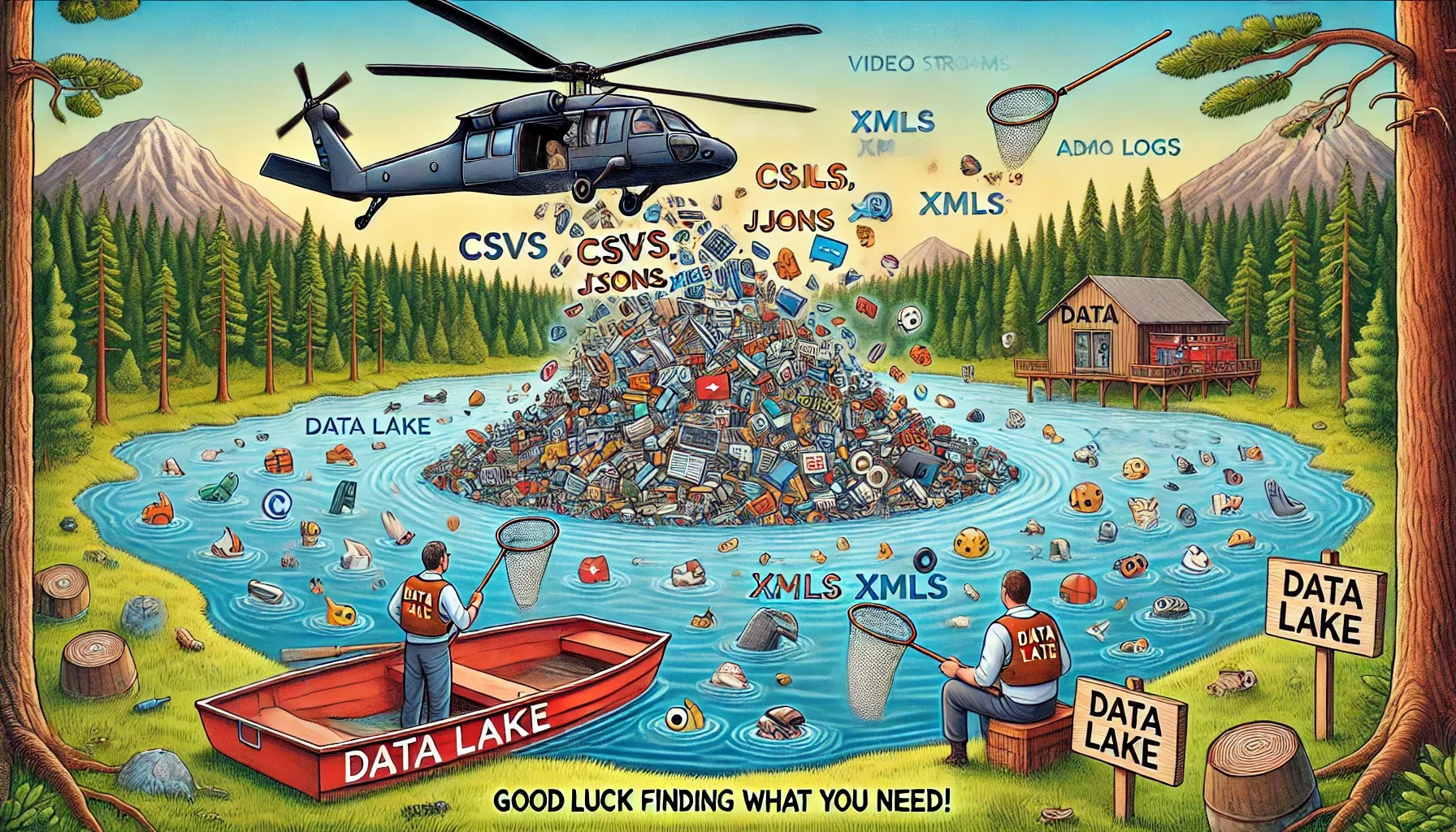Ever moved house and ended up tossing everything into the garage thinking, “I’ll sort this later”? That’s basically a data lake. It’s a massive, flexible space where you can dump all sorts of raw data without worrying about structure or format. Maybe you’ll use it. Maybe you won’t. But it’s there if you need it.
In this post, I’ll break down what a data lake actually is, how it works, and why you might want one in your tech stack. No fluff. Just straight talk.
What Exactly Is a Data Lake?
A data lake is a central storage space for raw data. Not just clean, structured stuff. We’re talking logs, images, social media posts, CSVs, audio files, JSON from APIs, you name it. Structured, semi-structured, unstructured. All of it can go in.
You don’t need to know how you’ll use it yet. You just store it as is. Later on, when your analysts or data scientists need to dig into it, they pull out what they want and make sense of it then.
It’s different from a data warehouse. Warehouses need structure and schema before data goes in. Lakes are happy to hold onto whatever you throw in.
Data Lake vs Data Warehouse: A Simple Analogy
Let’s use a kitchen example.
A data warehouse is like your spice rack. Everything is labelled, sorted, and you know exactly where the cumin is when you need it.
A data lake? That’s more like a big drawer where you toss all your groceries without sorting anything. You’ve got onions next to frozen peas and a tub of hummus you forgot about.
It might sound messy. But when you don’t yet know what you’re going to cook, that drawer gives you options.
So:
- Warehouse = structured, defined, tidy
- Lake = raw, flexible, catch-all
Why You Might Want a Data Lake
Let’s say your business collects all kinds of data. Customer clicks, app logs, IoT sensor readings, chatbot messages, sales reports, survey responses. You don’t have time to structure and process it all right away.
With a data lake, you just store it. All of it. Later, when a question comes up or a new use case appears, you can go back and explore it.
Here’s why data lakes are useful:
- You can store anything. Seriously. Any format, any source.
- It scales easily. Need to double your storage? No problem. Most are cloud based.
- It’s future friendly. You might not need that raw event log now, but six months from now it could hold the answer to a revenue dip.
How Does a Data Lake Work?
A data lake collects data from different systems. Could be databases, mobile apps, IoT devices, social platforms, or internal tools.
The data goes in as is. No transformation needed.
Once it’s there, you can use tools like Apache Spark, Athena, Redshift Spectrum, or even good old Python to query and transform that data. Maybe it ends up in a cleaned up data mart. Maybe it feeds a machine learning model. The point is, the lake keeps the door open for whatever you need later.
Pros and Cons of Using a Data Lake
Let’s not pretend data lakes are perfect. They’re great when done right. But they can also get messy fast.
Pros
- Lower cost than traditional databases
- Highly flexible for different use cases
- One single place for all kinds of data, from images to logs to structured records
Cons
- Easy to lose control. If nobody manages it, the lake turns into a swamp
- Harder to govern without proper tagging and rules
- Data quality varies. Raw data might be full of duplicates, missing values, or inconsistent formats
A Real Example: How Stream-Oz Uses a Data Lake
Imagine a streaming service. Let’s call it Stream-Oz. They track everything users do. What you watch, when you stop, when you rewind, what you rate five stars, what you skip after two minutes.
They don’t know immediately what to do with all that. But they collect it anyway. And they dump it into their data lake.
Later, analysts explore the data to figure out what shows are popular, when people are most engaged, or which trailers lead to the highest view rates. That data might even influence what new content they invest in.
Without the lake, they’d be throwing away valuable information just because they weren’t ready to use it yet.
How to Keep Your Data Lake From Turning Into a Swamp
Here’s the part most people forget. You have to manage your lake, or it becomes a mess.
Some quick tips:
- Use metadata. Tag everything. What it is, where it came from, when it was loaded.
- Set access controls. Not everyone should be allowed to touch everything.
- Monitor and audit. Make sure you know what’s going in and who’s using it.
- Build a retention plan. You probably don’t need raw logs from five years ago. Clean house sometimes.
Final Thoughts
A data lake is not a silver bullet. But it’s a powerful option when you’ve got loads of raw data and no clear plan yet.
It gives you flexibility, scalability, and a central place to store everything for future exploration. Just don’t forget to put a bit of governance around it. A little structure goes a long way in keeping things useful.
And next time you find yourself saying, “I’ll figure it out later” as you toss another log file into your cloud bucket, congrats. You’ve just built a tiny corner of your very own data lake.
